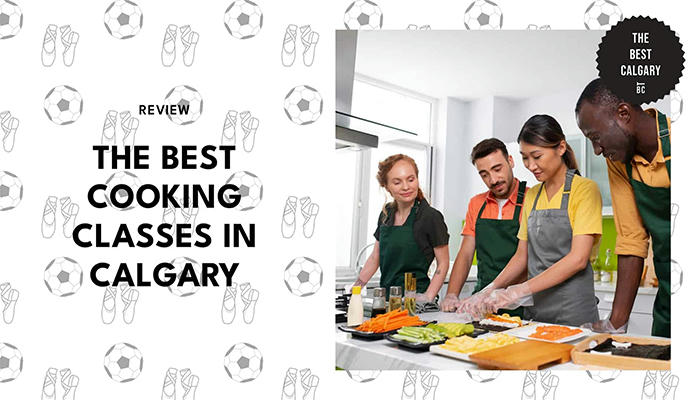How to Start Your Online Cooking Class Business
If you’re the go-to person for recipes and kitchen tips among your friends, it’s time to take your culinary expertise to a global audience. Teaching online cooking classes allows you to share your passion for food with people around the world, all from the comfort of your kitchen. Whether you’re looking to turn your hobby into a side hustle or build a full-time career, this step-by-step guide will help you launch your online cooking class business successfully.

1. Define Your Goals
Before diving into recipe creation and filming, take a moment to define your goals. Knowing what you want to achieve will guide every decision you make. Ask yourself:
•Is this a side hustle or a full-time career? Are you looking to supplement your income or replace your 9-to-5 job?
•What drives your passion for cooking? Do you love teaching, sharing cultural cuisines, or experimenting with new techniques?
•Who do you want to help? Are you targeting busy professionals, aspiring chefs, or home cooks looking to explore new cuisines?
Clear goals will keep you focused and motivated as you build your business.
2. Find Your Niche
The culinary world is vast, and finding your niche is essential to stand out. Think about what excites you and where you can offer unique value. Consider specializing in:
•Advanced Techniques: Teach intricate skills like knife work, pastry art, or sous-vide cooking.
•Quick and Easy Meals: Help busy individuals prepare delicious, time-efficient dishes.
•Cultural Cuisine: Share traditional recipes from your heritage or explore global cuisines.
•Diet-Specific Cooking: Focus on vegan, gluten-free, or keto-friendly recipes.
Your niche doesn’t have to be overly unique—it just needs to reflect your expertise and passion. Remember, you don’t need to be a Michelin-star chef to succeed. Often, being a relatable home cook can make your classes even more appealing.
3. Identify Your Target Audience
Once you’ve chosen your niche, it’s time to identify your target audience. Understanding who your ideal students are will help you tailor your content and marketing efforts. Conduct market research by:
•Surveying Potential Students: Ask friends, family, or social media followers about their cooking interests and challenges.
•Analyzing Competitors: Study existing cooking classes to identify gaps in the market.
•Using Keyword Research: Tools like Google Trends or Ubersuggest can help you discover popular cooking-related topics.
For example, if you’re passionate about Italian cuisine, find out if there’s demand for specific types of recipes, like vegetarian pasta dishes or authentic regional specialties.

4. Plan Your Curriculum
With your goals, niche, and audience in mind, start planning your curriculum. A well-structured course will keep students engaged and coming back for more. Consider:
•Course Outline: Draft a flexible outline of topics, lessons, and recipes. Start with foundational skills and gradually introduce more advanced techniques.
•Lesson Formats: Mix video tutorials, live sessions, and downloadable resources like recipe cards and shopping lists.
•Supplementary Materials: Include tips, troubleshooting guides, and bonus content to add value.
Your curriculum doesn’t need to be perfect from the start. Treat it as a working document that evolves as you receive feedback and gain experience.
5. Choose the Right Platform
Selecting the right platform to host your classes is crucial. Here’s a breakdown of popular options:
•WordPress: Ideal for those who want full control over their website. Use plugins like Sensei Pro or LearnDash to create and manage courses.
•eLearning Platforms: Teachable and Thinkific are user-friendly options that handle course management and payments.
•eLearning Marketplaces: Udemy and Skillshare offer built-in audiences but take a percentage of your earnings.
•Membership Platforms: Patreon allows you to offer subscription-based courses but charges a fee.
•YouTube: Great for free or introductory content, though it’s not ideal for selling courses directly.
•Zoom: Perfect for live, interactive classes but requires a separate platform for course promotion.
Choose a platform that aligns with your technical skills, budget, and business goals.
6. Set Your Pricing
Pricing your course is a delicate balance between affordability and profitability. Consider:
•Platform Fees: Account for any fees charged by your chosen platform.
•Market Rates: Research similar courses to understand what students are willing to pay.
•Value Proposition: Ensure your pricing reflects the quality and uniqueness of your content.
For example, you could offer tiered pricing with basic access to video lessons and premium packages that include live Q&A sessions or personalized feedback.

7. Build Your Website
Your website is the face of your business, so make it professional and user-friendly. Key elements include:
•Clean Design: Use a simple, visually appealing layout that reflects your brand.
•Easy Navigation: Ensure students can easily find and access course materials.
•Engaging Content: Include testimonials, a blog, or a free recipe library to attract visitors.
Tools like Elementor can help you design a stunning website without needing advanced technical skills.
8. Gather Equipment
High-quality equipment is essential for producing professional-looking classes. Invest in:
•Camera: A DSLR or high-definition webcam for clear video.
•Microphone: A good-quality microphone to ensure clear audio.
•Lighting: Softbox lights or ring lights to brighten your filming space.
•Editing Software: Tools like Adobe Premiere Pro or iMovie for polishing your videos.
If you’re hosting live classes, consider using plugins like WPStream to integrate live streaming seamlessly into your website.
9. Create Engaging Content
Your content is the heart of your business, so make it informative, engaging, and memorable. Focus on:
•Step-by-Step Instructions: Break down recipes into easy-to-follow steps.
•Personal Stories: Share anecdotes or cultural insights to make your lessons relatable.
•Evergreen Content: Create videos and resources that remain relevant over time.
For example, if you’re teaching a class on French pastries, include tips on achieving the perfect flaky crust or the history behind croissants.

10. Promote Your Course
Marketing is key to attracting students. Use these strategies to spread the word:
•Social Media: Share recipes, behind-the-scenes content, and testimonials on Instagram, Facebook, and Pinterest.
•Content Marketing: Write blog posts or create videos about cooking tips, kitchen hacks, or cultural food traditions.
•Free Courses: Offer a free introductory class to give potential students a taste of what you offer.
•Collaborations: Partner with food bloggers or influencers to reach a wider audience.
11. Engage with Your Students
Building a community around your classes will keep students engaged and encourage word-of-mouth referrals. Foster interaction by:
•Hosting Live Q&A Sessions: Answer questions and provide personalized feedback.
•Creating a Forum: Allow students to share their experiences, ask questions, and connect with each other.
•Gathering Feedback: Regularly survey students to identify areas for improvement.
12. Track Your Performance
Regularly assess your business’s performance to ensure it’s on track. Monitor:
•Student Retention: Are students completing your courses or dropping off midway?
•Feedback: Use surveys and reviews to identify strengths and weaknesses.
•Revenue: Track income and expenses to ensure profitability.
Use these insights to refine your courses, improve your marketing strategies, and grow your business.
Conclusion
Starting an online cooking class business is an exciting way to share your culinary passion, connect with people, and earn income. By defining your goals, finding your niche, planning your curriculum, and choosing the right platform, you can create a thriving online venture. With high-quality equipment, engaging content, and effective promotion, you’ll be well on your way to becoming a digital culinary star.
So, roll up your sleeves, fire up your camera, and get ready to inspire and educate home cooks around the world. Your journey to building a successful online cooking class business starts today!
